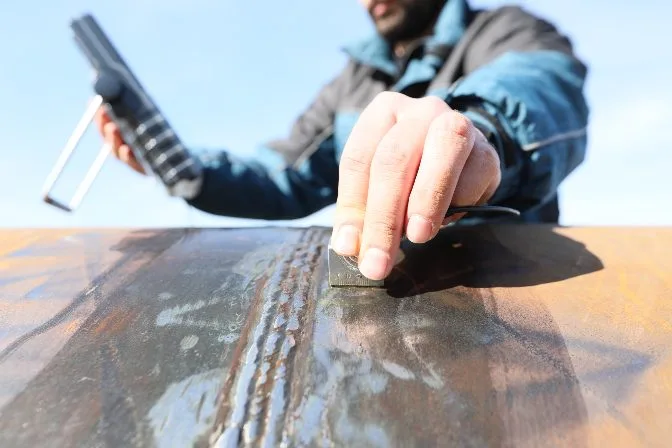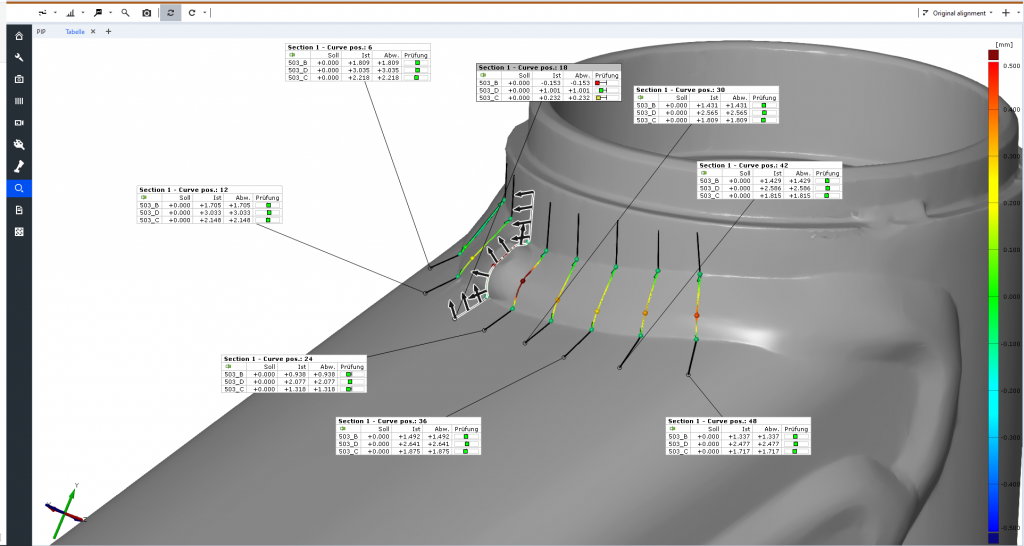A Comprehensive Guide to Recognizing Just How Welding Evaluation Functions: Methods, Specifications, and Ideal Practices for Quality Control in Steel Construction
Recognizing the intricacies of welding examination is important for preserving the honesty of steel manufacture. Carrying out best techniques can significantly boost quality guarantee procedures. The landscape of welding inspection is not without its difficulties.
Importance of Welding Assessment
Although welding is a vital procedure in numerous markets, its stability straight influences the safety and security and efficiency of parts and structures. Effective welding examination is essential for recognizing problems that might jeopardize the top quality and longevity of welded joints. This procedure ensures adherence to developed specifications and criteria, which are essential for maintaining structural stability and functional reliability.
Welding examination offers numerous functions, including validating that the welding process has been implemented properly, assessing the high quality of products utilized, and confirming that the completed item fulfills governing and market standards (Houston Welding Inspection). With strenuous inspection, prospective concerns such as porosity, cracks, and incomplete fusion can be discovered early, mitigating and stopping costly repair work safety and security threats
Moreover, regular welding assessments foster self-confidence among stakeholders, consisting of designers, clients, and regulatory bodies, by showing a dedication to quality control. The importance of welding evaluation can not be overemphasized; it is integral not only for compliance with legal requirements however likewise for improving the total performance of welded structures. Ultimately, a durable welding assessment program is an aggressive action that safeguards versus failures, guaranteeing the long life and integrity of bonded parts in their intended applications.
Typical Welding Assessment Strategies

Visual evaluation is the very first line of defense, allowing inspectors to recognize surface area issues such as splits, damages, or insufficient fusion. Radiographic screening utilizes X-rays or gamma rays to reveal interior flaws, making it excellent for complex welds. Ultrasonic screening utilizes high-frequency audio waves to detect subsurface flaws, offering specific measurements of weld integrity.
Magnetic particle screening works for ferromagnetic products, highlighting surface and near-surface stoppages when bits are put on an electromagnetic field. On the other hand, dye penetrant testing makes use of a liquid color to disclose surface-breaking problems, ensuring that also the tiniest problems are found.
Each strategy has its limitations and toughness, frequently demanding a mix of methods for detailed assessment - Houston Welding Inspection. By applying these examination techniques, quality control in steel fabrication is attained, guaranteeing that welded structures satisfy safety and efficiency requirements
Sector Criteria for Welding


The American Welding Culture (AWS) and the American National Specification Institute (ANSI) are 2 famous companies that develop welding standards. the original source AWS D1.1, for instance, details the demands for welding steel frameworks, while AWS D1.2 concentrates on light weight aluminum. Worldwide, the ISO 3834 basic addresses top quality needs for blend welding, providing a structure suitable throughout national borders.

Best Practices for Top Quality Assurance
Quality guarantee in welding is critical to attaining secure and resilient buildings. Developing a detailed quality management system (QMS) customized to the specific welding task is necessary.
Routine training and certification of welding employees are vital for maintaining an experienced workforce. Continuous education and learning on the latest welding techniques and modern technologies makes sure that examiners and welders are knowledgeable concerning current standards and techniques.
Additionally, carrying out pre-weld examinations to review materials and devices can protect against problems prior to they occur. Houston Welding Inspection. During the welding procedure, real-time tracking and documentation of welding specifications assist identify incongruities promptly. Post-weld examinations ought to include comprehensive exams making use of non-destructive testing (NDT) techniques to ensure the honesty of the welds
Additionally, maintaining clear interaction among team members advertises a society of quality. Routine audits and evaluations of the redirected here welding process assistance identify areas for renovation. By sticking to these ideal practices, companies can achieve optimal top quality guarantee, inevitably causing improved security and performance in steel construction jobs.
Obstacles in Welding Inspection
Although welding assessment is critical for ensuring architectural honesty, it offers a variety of difficulties that can complicate the analysis procedure. One substantial challenge is the irregularity in welding techniques and products used, which can affect the uniformity of weld top quality. Different welders might employ varying methods, leading to disparities that inspectors need to determine and examine.
An additional difficulty involves the discovery of issues. Non-destructive testing (NDT) approaches, such as ultrasonic and radiographic testing, can be complicated and require skilled professionals to translate results precisely. False positives or downsides can happen, possibly leading to pricey rework or endangered security.
Furthermore, the visibility of environmental variables, such as temperature level and humidity, can influence the integrity of welds and the effectiveness of inspection methods. Examiners need to also navigate the regulative landscape, making certain conformity with market standards, which can differ by territory and application.
Conclusion
Finally, welding inspection plays a crucial role in making sure the stability and security of metal construction. Employing a selection of assessment methods, sticking to established sector requirements, and applying effective quality monitoring practices jointly improve the dependability of bonded structures. Despite the difficulties encountered in the inspection process, a commitment to continuous improvement and adherence to best practices can substantially reinforce the quality control framework, cultivating greater confidence amongst stakeholders in the welding sector.
Reliable welding inspection is vital for determining issues that can endanger the quality and toughness of welded joints.Additionally, regular welding inspections foster confidence among stakeholders, consisting of engineers, customers, and governing bodies, by showing a commitment to high quality guarantee.The American Welding Society (AWS) and the American National Specification Institute (ANSI) are two noticeable organizations that develop welding standards. Throughout the welding procedure, real-time tracking and documentation of welding parameters assist determine incongruities quickly. In spite of the obstacles dealt with in the examination process, a commitment to continuous improvement and adherence to ideal practices can significantly boost the quality assurance structure, fostering better self-confidence amongst stakeholders in the welding industry.